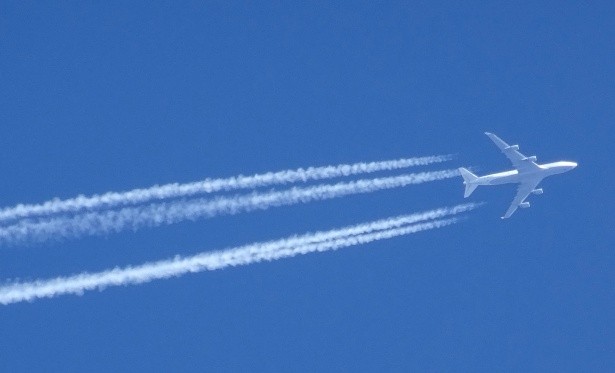Let's get this one thing straight: most people prefer flying to other modes of transport, and we seem to do it more and more often. The airline industry is booming and 4.1 billion passengers have been transported last year. Almost every figure one looks at shows the impressive increase in flights over the last two decades.
Alexandre de Juniac, head of the International Association for Flight Transport proclaims: “In 2000, the average citizen flew just once every 43 months. In 2017, the figure was once every 22 months. Flying has never been more accessible. And this is liberating people to explore more of our planet for work, leisure, and education. Aviation is the business of freedom."
However, this ‘business of freedom’ runs on fossil energy carriers as planes still almost exclusively fly on kerosene. Kerosene is a fuel produced by oil refining and carbon dioxide (CO2) is the major product of burning kerosene. The 2-5% of all global CO2 emissions the aviation industry emits is caused by its fuel consumption (and choice). And unlike other fuels like diesel or gasoline, airlines don't pay taxes on kerosene in most countries — making cheap air travel possible.
In 2018 Europe’s biggest airline Ryanair became number 9 in the list of Europe’s biggest CO2 emitters and still claims to be the ‘greenest and cleanest airline’. Andrew Murphy – the aviation manager at the European Federation for Transport and Environment — argues that Ryanair the new coal when it comes to climate pollution. Ryanair CEO Michael O’Leary, on the other hand, dismisses such claims by saying the claims are ‘’complete and utter rubbish’’.
Other airlines, like KLM who partly uses renewable jet-fuel, are acknowledging the problem but they aren't too far behind Ryanair on the list of emitters.

The growth of the industry is not expected to slow down. India and China are the biggest growth markets, the latter alone is building 200 new commercial airports in the next ten years. Moreover, industry forecasts suggest that emissions will rise by 700% until 2050 which amounts to more than 4% of the world’s remaining carbon budget.
If we want to reach the goals of the Paris Agreement, every the average earthling has a quota of two tons of CO2 per annum but just a return trip between New York and Amsterdam generates three tons already.
Compared to other modes of transport planes are the biggest CO2 emitters per travelled kilometre followed by cars, buses and finally trains which are the least polluting. The CO2 emissions, however, are only one half of the medal. The impact of flying on global warming is different than most other transport as it happens in the air high above the ground where the processes that cause or reduce global warming happen. These include CO2 and nitrogen oxide emission but also cloud formation, ozone and soot as well as methane reduction.
The climate impact of the emitted greenhouse gases in the stratosphere are three times higher than on the ground. Flying also causes condensation trails and fog clouds in certain weather conditions. Such clouds can have a warming or a cooling effect on the climate. One way to improve the climate effect of flying would be planning better routes where warming clouds are avoided and the formation of cooling clouds is favoured — our current routes have an overall warming effect.
So, hypothetically, some flights with clever flight-route planning might even reduce global warming. However, as we don't have time to hypothesise, we need to find and urgently implement other ways to bring down the impact of flying, like using better fuels or even better planes.
This article was written by Eric Schuler for Kinder World. Schuler is a PhD candidate at the University of Amsterdam and works on new industrial sustainable chemistries to turn captured CO2 into useful things such as plastics or fuel. He's also a photojournalist with an interest in climate and land-use change.




